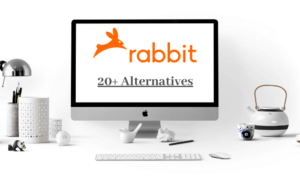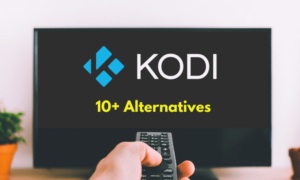For the success and growth of any organization, IT Asset Management plays a pivotal role. Whether managing your IT assets in real-time or gaining enhanced visibility, efficient management of IT assets provides you with faster incident resolution. ITAM is not a one-time process; it is a practice you must nurture continuously for exceptional outcomes. An efficient ITAM process adds more value to your organization and helps deliver quality results to your end-users.
According to MarketsAndMarkets, the overall asset management market is estimated to grow by more than 27 billion USD by 2025. This clearly states the importance of IT asset management and how aggressive organizations are moving towards IT asset management systems. Also, organizations save around 30% of their cost in the first year after implementing the ITAM process.
To keep your organization’s IT infrastructure running smoothly, it is essential to have a sound asset management system in place. This article will provide you with ten best practices that you can use to ensure that your IT asset management system is up to par.
10 Best Practices for IT Asset Management (Checklist Included):
1. Keep an Up-to-Date Inventory
According to Capterra, around 1.1 trillion dollars of working capital is tied up in inventory, equivalent to 7% of the U.S. GDP. And this is why keeping an up-to-date inventory is one of the essential practices in IT asset management. This inventory should include all your company’s hardware, software, and licenses. It is essential to update this inventory regularly to keep track of your assets and ensure that they are appropriately accounted for.
An up-to-date inventory will also help you track your assets’ depreciation. This information can be used to budget for future replacement costs. Additionally, if you ever need to file an insurance claim for damaged or lost assets, having an up-to-date inventory will make the process much easier.
Maintaining up-to-date inventory is a critical best practice for effective IT asset management. You can save yourself a lot of time and money in the long run by taking the time to update your inventory regularly.
2. Categorize Your Assets
Categorizing your assets is also one of the crucial practices to witness exceptional ITAM. This helps you to keep track of your assets and to know where they are located. There are many different ways to categorize assets, but a standard method is by location. So, for example, you could have a category for assets in the office, another category for assets in storage, and so on.
Another way to categorize assets is by type. For example, you could have a category for computers, another category for printers, and so on. This can help you to keep track of your assets and to know what each asset is used for.
Categorizing your assets can help you to manage them more effectively. It can also help you find assets more easily when needed. Also, you can use professional and customized ITAM tools that help you categorize your assets proficiently. These professional tools help in automatically discovering your assets and provide you peace of mind with incredible features.
See Also: How to Improve the Manufacturing Process?
3. Understand Your Asset Lifecycles
IT asset management is tracking and managing the physical components of your organization’s information technology infrastructure. An effective IT asset management system helps you keep track of your assets, from acquisition to disposal.
One of the most critical aspects of IT asset management is understanding the lifecycle of your assets. Every asset has a different lifespan, and tracking each asset throughout its entire lifecycle is vital. In addition, this information can help you decide when to replace or upgrade an asset.
Another critical aspect of IT asset management is keeping accurate records. You need to know what assets you have, where they are located, and who is responsible for them. Accurate records can help you avoid duplicate purchases, and they can also help you track down an asset if it’s lost or stolen.
Effective IT asset management requires understanding your asset lifecycles and accurate record-keeping. These two practices will help you track your assets and ensure they are being used effectively.
4. Implement Software to Automate Tracking
One of the best ways to manage IT assets is to use software to automate the tracking process. This way, you can be sure that all of your assets are being tracked correctly and that nothing is being missed. Many different software programs available can help with this, so be sure to do some research to find the one that will work best for your needs.
Another critical best practice in IT asset management is to keep accurate records. This means keeping track of your assets, where they are located, and their value. This information can be beneficial if you ever need to file an insurance claim or sell your business. Make sure to update your records regularly so that they are always accurate.
Regular maintenance is also essential for IT asset management. This includes keeping your software up to date and ensuring that all your equipment is in good working order. By performing regular maintenance, you can avoid costly repairs or replacements down the road. Finally, it is crucial to have a plan in place for disposing of IT assets
Also Read: How 5G Networks and IoT Will Power Smart Cities of the Future
5. Use Barcodes and RFID Tags
Barcodes and RFID tags are a great way to keep track of your IT assets. According to ScienceDirect, barcodes & tagging reduces errors in a medical facility by around 41%, which might be huge in any other industry. By attaching these tags to your assets, you can quickly and easily scan them into your asset management system. This will help you track your assets, use them, and when they need to be replaced or serviced.
It is essential to keep track of the warranty information for your IT assets. This information can be used to schedule the replacement or repair of your assets if they break down. In addition, keeping track of your warranty information ensures that your assets are always in good working condition.
6. Conduct Annual Audits
It is important to conduct annual audits of your IT assets to track what you have and what needs to be updated or replaced. This information can help you make informed decisions about your budget and future purchases.
Your staff can conduct audits internally, or you can hire an outside company to do it for you. Either way, it is essential to have a clear plan for what you want to accomplish with the audit. Make sure to identify any areas that need improvement and set goals for the following year.
Regular audits are a vital part of effective IT asset management. By assessing your assets every year, you can ensure that your system is up-to-date and running smoothly.
7. Dispose of Assets Properly
When it comes to disposing of assets, it is essential to do so correctly. This means ensuring that all data is wiped from the asset and disposed of in a way that protects the environment.
One of the best ways to dispose of an asset is to recycle it. This can be done through a certified recycling program. Recycling helps to ensure that the materials in the asset are reused and that the asset does not end up in a landfill.
Another option for disposing of an asset is to donate it. This can be done to a charitable organization or to someone who may be able to use it. Donating an asset ensures that it will be put to good use and will not go to waste.
When disposing of an asset, it is essential to choose a suitable method. Recycling or donating assets are both excellent options. However, whatever method is chosen, it is essential to ensure that all data is wiped from the asset first.
See Also: Security Token Offering (STO) – What It Is and How It Works
8. Keep Detailed Records
IT asset management tracks and manages the physical equipment and software that comprise an organization’s IT infrastructure. Keeping detailed records is an essential part of IT asset management. Organizations need to know their assets, where they are located, who is using them, and when they were purchased. This information helps organizations keep track of their assets and plan for future needs.
Also, they should create an inventory of all their IT assets. This inventory should include each asset’s make, model, serial number, and location. It should also include information on who uses the asset and when it was purchased. This information can be stored in a spreadsheet or database. Also, organizations should track the total IT cost and value to understand the overall scenario of ITAM.
Moreover, companies should also create a system for tracking changes to their IT assets. This should be recorded in the system whenever an asset is added, removed, or modified. This will help organizations keep track of their assets over time and ensure they are always up-to-date.
They can ensure that they are appropriately managed and maintained by keeping detailed records of their IT assets. This will help improve the organization’s efficiency and avoid problems down the road.
9. Manage Vendor Contracts
Ensure you have a system for tracking and managing your IT asset management contracts. This will help you stay on top of renewals and ensure you get the best possible terms from your vendors. Also, if any problem occurs in the future, organizations can easily connect with the vendor and resolve it proactively.
An efficient IT Asset Management tool offers incredible features where you can easily maintain vendor contracts and defined assets to get a smooth and flexible process.
10. Educate Employees
If you want your employees to properly manage your company’s IT assets, it’s essential to educate them on the best practices. Make sure they understand the importance of keeping track of your assets and keeping them in good condition. Explain what damage can occur if an asset is not managed correctly.
It is also essential to provide employees with the tools they need to manage assets properly. For example, give them access to asset management software and ensure they know how to use it. In addition, provide training on how to add and update asset information correctly.
Finally, ensure you have a professional IT asset management tool for reporting damaged or lost assets. This will help you quickly identify any problems and take corrective action.
Related: How Do You Ensure Safety and Security of Employees?
Conclusion
As humans can’t live without food and water, in the same manner, organizations can’t survive without proactive IT asset management processes in place. This article has covered a list of the best IT asset management practices to help you implement a robust ITAM in your organization. To get the best outcomes from the above-discussed practices, ensure that you choose the most advanced and feature-rich IT asset management solution for your organization.





















